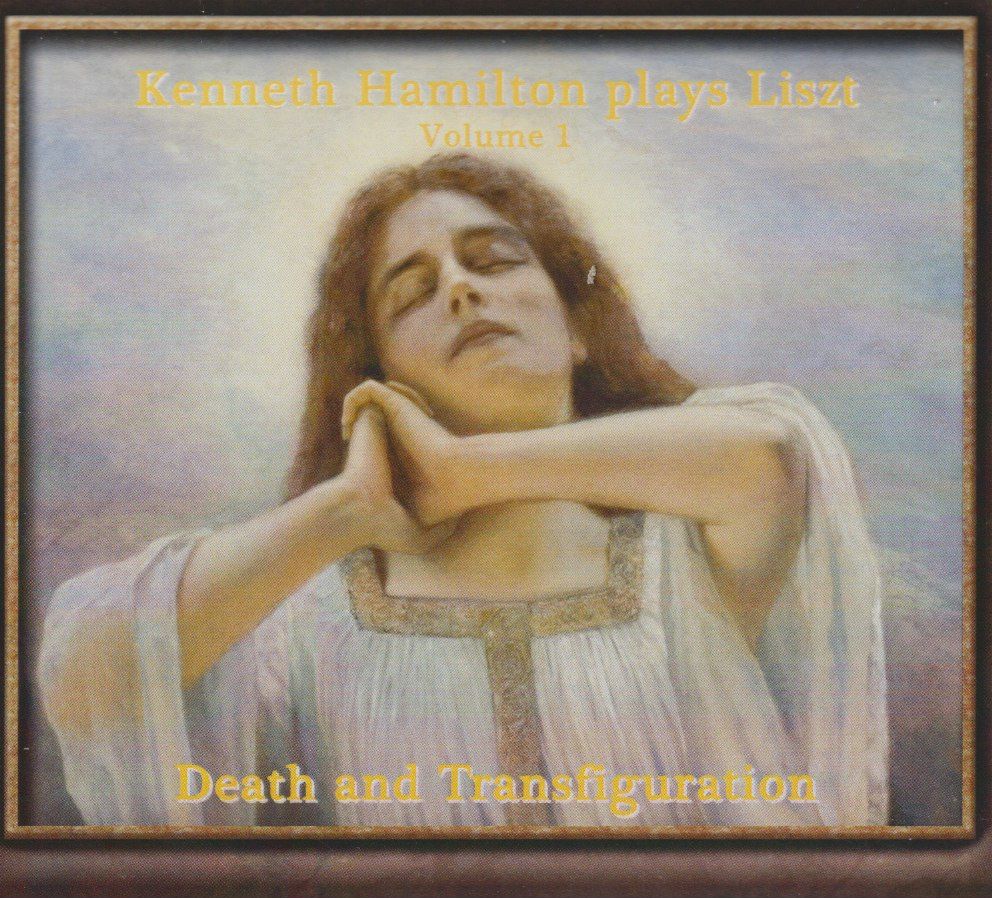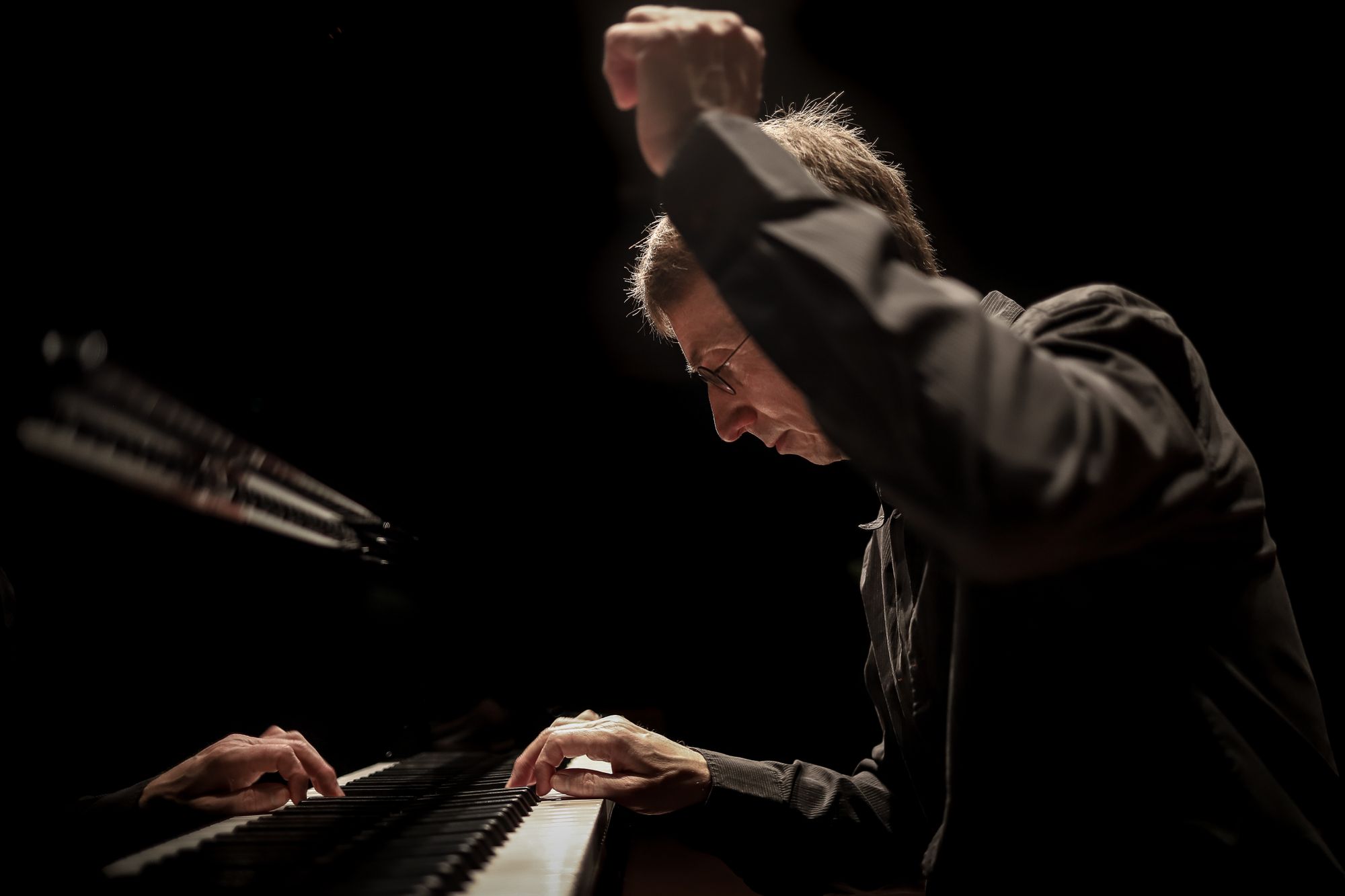Death and Transfiguration: Kenneth Hamilton plays Liszt
A magnificent release, its contents perfectly judged and delivered with a balanced mix of virtuosity and intellect

We previously met pianist and scholar Kenneth Hamilton with his disc Romantic Piano Encores. Here is a twofer (generously priced on Amazon) that offers a more sustained look at one composer: that towering figure of the Romantic Era, Franz Liszt.
We begin with Funérailles, one of Liszt's very darkest pieces. One certainly hears the links to Chopin in Hamilton's performance (the obsessively repeated left-hand octaves is the most obvious element). The sense of black ecstasy at the climax - bare octaves piunctuated by dark, low chords - is palpable here:
When it comes to the 'Bénédiction de Dieu dans la solitude' (from Harmonies poétiques et réligeuses, S 173), what marks out Hamilton's approach is his research into annotations and perforances by Liszt pupils: Lina Ramann (Liszt Pedagogium) and Siloti's abridged piano roll. Silolti's performances were a mirror of Liszt's own use of arpeggiated chords, for example. Again, Hamilton traces the structure of the piece perfectly, the music rising and swirling in waves, the climax natural and beautifully delivered - but what mastery and intensity there is the more contemplative plateaux, also:
When it comes to Czardas macabre, S 224, this is a remarkable piece, irreverent, daemonic. Written in 1881/2, it si emphatically of Liszt's late period in its unpredictability, here manifesting in a sense of devilish anything goes. Hamilton finds just the right sense of abandon:
This begins a trilogy of reflective pieces, the extensive "Pensée des Morts" (like the "Bénédiction," from Harmonies poétiques et réligeuses) and the infamous Nuages gris (Gray Clouds). This latter piece is notorious among music analysts: it is hardly "in" G minor, despite what the left-hand might think. A relevant example of writing on this piece - relevant as it covers the ideas of Death and Despair in late Liszt - is this dissertation from the University of Kansas and, more famously (if that's the right word) in musico-analytical circles, J. M. Baker's The Limits of Tonality in the Late Music of Franz Liszt (Journal of Music Theory, Vol. 34/2, Autumn 1990) or, more recently, this article by William Hume which links late Liszt and Nuages gris in particular to the music of French Spectralist Tristan Murail. The piece is magnificently enigmatic and, in the lineage of Pollini, Hamilton uses late Liszt to prefacce the famous B-Minor Piano Sonata, something that emphasises the Sonata's progressive charactertistics, particularly in the bass descents of the opening and, later, in obsessive left-hand repetitions. Here's Nuages gris:
and let's hear Hamilton in the Piano Sonata (worth noting there are a couple of live performances from Cardiff are available on YouTube to complement this one):
That sense of structural integrity we heard earlier in the set is writ large here, and appears in tandem with a keen sense of emotive expression; in this sense, Hamilton achieves an ideal balance that eludes Pollini, who seems to concentrate on the more cerebral aspects in his DG recording (live can be another matter of course). Hamilton's way with Liszt's mercurial, mocking counterpoint is impeccably judged, for example.

The second disc begins with one of Liszt's finest masterworks, a piece under-rated and under-performed to this day, the Ballade No. 2 in B minor, S 171:
It links, in its key, nicely with the Sonata. It is a magnificent piece, encompassing both true blackness and passages of ethereal beauty. Hamilton's performance is one of the finest: perhaps only Ervin Nyiregyházi captures its true bleakness, however:
Hamilton states that, according to Claudio Arrau (himself a pupil of Liszt pupil Martin Krause), it was "common knowledge that his Ballade was a depiction of the Greek myth" of Hero and Leander. Certainly the piece has a sense of heroic and timeless narrative about it. The brief En rêve (1885) that follows in Hamilton's set appears as something of a prolongation of the Ballade, but it is the Russian folksong setting of Abschied (Farewell) that is so fascinating,the melody impeccably of its place, but here encased in Liszt's own flavour:
Originally a song (Liszt's songs are woefully neglected, incidentally - see this previous post), Die Zelle in Nonnenwerth appears as a dreamy self-transcription, its level of intimacy increased in the process:
That is actually Liszt's fourth transcription of that piece. Nonnenwerth is a tiny island on the Rhine that housed a monastery, so it seems fitting that the "Ave Maria" from the Harmonies poétiques follows on in a a beautiful performance (it's Hamilton's awareness of harmonic process and meaning - and linear meaning, for that matter - that makes it sound so radiant).
As something of an interlude, Hamilton offers Liszt's arrangement of Schubert's Impromptu in G flat, a piece which influenced Liszt's Pensée des Morts heard earlier in the programme. What an interlude this is, sweet, contained (in the Searle catalogue of Liszt's works this is S 565b):
The sense of longing and desolation in La lugubre gondola I is palpable - but so is a sense of beauty, and while there is also a sense of fragmentation, it's not quite complete dissolution:
The late works of Liszt offer great beauty - as Die Lorelei attests (qrittenin 1841, it is heard here in its second version of 1854-56:
Two transfigurations close the collection: one.a piece that was completely new to me, one that will be known doubtless by many. The In Festo Transfigurationis Domini Jesu Christo (1880), a post-mortem visitation of the Christian Jesus Christ to his disciples at Mount Tabor, is restrained and concentrated; the Wagner transcription is the polar opposite.
A magnificent release, its contents perfectly judged and delivered with a balanced mix of virtuosity and intellect.
